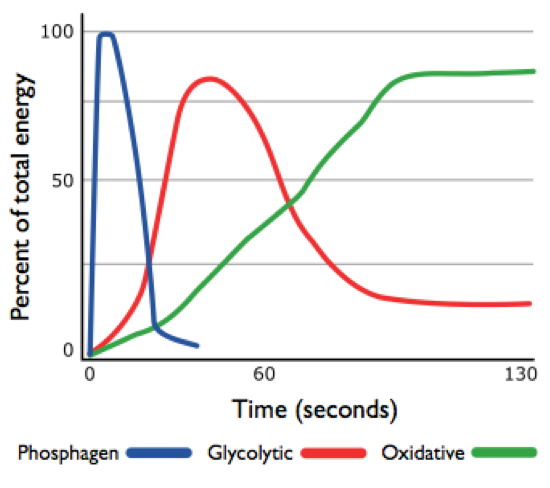energy systems in climbing
The Pillars of Climbing
We're onto our next strength topic in this series: energy systems, or as you may be more familiar with them: strength/power, power endurance, and endurance.
There are three main systems by which our bodies convert chemical energy (think: energy our bodies derive from food) into biologically usable forms of energy (think: energy we use when we contract our muscles).
The usable form of energy in our bodies is a molecule called ATP and each of these energy systems is employed to create ATP at different durations of exercise.
Roughly translating these energy systems to climbing: the phosphagen system is responsible for strength/power, the glycolytic is responsible for power endurance, and the oxidative is responsible for endurance.
There is an inverse relationship between the duration of an effort and the intensity of that effort because of the rate at which these energy systems can produce ATP. The shorter the effort, the higher the intensity of movement we can perform and vice versa.
So why does all of this matter?
It's important to be intentional with how you are spending our time on and off the wall because you want to make sure that your training is metabolically specific to your goals.
Not only does the duration and intensity of your climbing matter, but the amount of time you're taking to recover matters as well.
Let's say your goal is to improve your bouldering power.
But if during your sessions you're rapid firing and taking only 30 seconds between your burns, then you're not actually training your power at all. You've turned your workout into a power endurance focus.
Similarly if you're trying to get endurance and you do a lap on a climb that takes you 2 minutes, but then get sucked into a conversation with your friend and end up resting for 10 minutes, you haven't achieved your energy system training goal.
To best physically prepare your body for the demands of your goals, keep these energy systems in mind as you plan your sessions!




